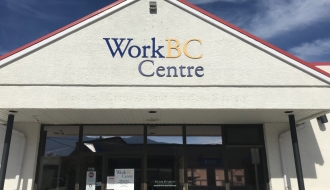Career Overview
Air pilots, flight engineers and flying instructors work for airline and air freight companies, flying schools and other public and private sector aircraft operators.
Air pilots fly fixed wing aircraft and helicopters to provide air transportation and other services, such as crop spraying and aerial surveying.
Flight engineers help air pilots monitor, troubleshoot and maintain aircraft systems, as well as with pre- and post-flight inspections.
Flying instructors teach flying techniques and procedures to student and licensed pilots.
Job Titles
Duties
Air Pilots:
- Conduct pre-flight inspection of aircraft and check passenger and cargo distribution to ensure that weight and balance specifications are met
- Co-ordinate flight activities with ground crews and air-traffic control, inform crew members of flight and test procedures and direct activities of aircraft crew during flights
- Contact control towers for takeoff clearances, arrival instructions and other information
- Conduct in-flight tests and monitor functioning of aircraft equipment and systems during flights, maintain communications with flight dispatchers and weather forecasters and respond to and report in-flight emergencies and malfunctions
- Prepare flight evaluation reports
- Train pilots to use new equipment, or prepare them for examinations to re-validate or upgrade existing licences
- May fly new or experimental planes to examine their flight performance and safety
- May participate in search and rescue operations, forest firefighting, aerial surveying, crop dusting and other services
Flight engineers
- Inspect aircraft prior to takeoff according to pre-flight checklist and verify passenger and cargo distribution to ensure that weight and balance specifications are met
- Assist air pilots in monitoring aircraft systems, equipment and functions during flight
- Make in-flight repairs, such as replacing fuses and adjusting instruments, and follow emergency procedures to compensate for equipment malfunction or failure
- Perform post-flight inspections, record equipment malfunctions and corrective actions taken during flight and report required repairs to ground maintenance personnel
Flying instructors:
- Instruct student pilots in procedures and techniques of flying aircraft and in ground-school subjects such as navigation, radio procedures and flying regulations
- Train licensed pilots for additional certification
Earnings
Earnings is income that workers receive in exchange for their labour. Depending on the type of employment, earnings can be in the form of wages (hourly), salaries (fixed monthly or annual) or self-employed earnings.
Work Environment
# Workers Employed
2,725% Employed Full Time
61%Work in this occupation is typically performed in a structured environment, such as an office or school, or inside an airplane or helicopter. Also, work circumstances may be treacherous, a potential source of injuries and produce sufficient noise to cause marked distraction or possible loss of hearing.
Career Pathways
Flight engineers may progress to co-pilot and pilot positions with required hours of flying experience and completion of licensing and endorsement requirements.
Related Careers
Occupational Interests
It’s important to understand what kinds of occupations align with your interests.
For more about occupational interests visit Skills for the Future Workforce > Characteristics.
Here are the top occupational interest(s) for this career profile:
Education, Training and Skills
Pilots and flight engineers
- Completion of secondary school and graduation from a certified flying or aviation school are required
- A university degree or college diploma may be required
- A commercial pilot's licence (more than 200 hours of flight experience) or an air transport pilot's licence (more than 1500 hours of flight experience) is required
- Additional licences or endorsements to fly different types of aircraft are required
- Flight engineers require a flight engineer license issued by Transport Canada
- Structured training is provided by employers
Flight instructors
- Completion of secondary school and graduation from a certified flying or aviation school are required
- A university degree or college diploma may be required
- A commercial pilot's or an air transport pilot's licence is required
- Transport Canada ratings and endorsements to provide instructions on different types of aircraft are required
Education programs in B.C.
The following program areas are related to this occupation:
- Aviation Related

Skills
Every job calls for a certain set of skills. Knowing those skills is the first step in finding a good career fit.
Here, you will find the 10 most relevant workplace skills. Some are more important to achieving success in a certain career than others. These skills may come naturally to you or you may need to gain them through education, training and experience.
See the list of work-related skills below, ranked in order of importance for this career. Check out the list and see if this career matches your skills—take that first step!
Controlling operations of equipment or systems.
Using logic and reasoning to identify the strengths and weaknesses of alternative solutions, conclusions or approaches to problems.
Watching gauges, dials or other indicators to make sure that a machine is working properly.
Keeping track of and assessing your performance, other individuals, or organizations to make improvements or take corrective action.
Giving full attention to what other people are saying, taking time to understand the points being made, asking questions as appropriate, and not interrupting at inappropriate times.
Talking to others to share information effectively.
Considering the relative costs and benefits of potential actions to choose the most appropriate one.
Understanding written sentences and paragraphs in work-related documents.
Adjusting actions in relation to others' actions.
Understanding how new information could be used to solve current and future problems in making decisions.
Labour Market Statistics
Discover data, facts and information that have been gathered and analyzed. Learn about the characteristics of the economy and labour market in B.C.
Employment
Find out about employment types and trends by region and industry.
Employment
2,725Employment by Region







| Region | Employment | % Employment of this Occupation |
|---|---|---|
| Cariboo | 90 | 3.3% |
| Kootenay | 80 | 2.9% |
| Mainland/Southwest | 1,440 | 52.9% |
| North Coast and Nechako | 70 | 2.6% |
| Northeast | 45 | 1.7% |
| Thompson-Okanagan | 475 | 17.5% |
| Vancouver Island/Coast | 525 | 19.3% |
Labour Market Outlook
The B.C. Labour Market Outlook is a 10-year forecast of the expected supply and demand for labour in the province. It’s usually updated every year. The purpose is to provide British Columbians with the knowledge to make informed decisions on careers, skills training, education and hiring.
Forecasted Job Openings (2024-2034)
1,800Forecasted Job Openings
Forecasted Employment Growth Rate
Composition of Job Openings
Job Openings by Region (2024-2034)







| Region | Job Openings | Avg. Annual Employment Growth |
|---|---|---|
| Cariboo | 60 | 1.4% |
| Kootenay | 30 | -0.2% |
| Mainland/Southwest | 980 | 1.2% |
| North Coast and Nechako | 100 | 2.4% |
| Northeast | 30 | -0.1% |
| Thompson-Okanagan | 230 | 0.8% |
| Vancouver Island/Coast | 380 | 1.2% |
Industry Highlights
Learn about the opportunities in B.C.'s major industries, including employment trends, earning potential, locations of work and more.
Forecasted Job Openings by Industry
| Industry | Job Openings (2024-2034) |
|---|---|
| Transportation and Warehousing | 1,620 |
| Educational Services | 100 |
| Public Administration | 30 |
| Professional, Scientific and Technical Services | 20 |
| Manufacturing | 20 |
Resources
-
Air Transport Association of Canada (ATAC)www.atac.ca/
-
Aviation Career – Canada Aviation Jobswww.careersinaviation.ca
-
British Columbia Aviation Council (BCAC)www.bcaviationcouncil.org
-
Canadian Owners and Pilots Association (COPA)www.copanational.org/en/presidents_corner_english
-
Transport Canada – Air Transportationwww.tc.gc.ca/en/services/aviation.html









